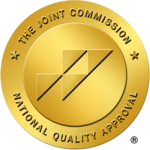Why Cravings Seem Stronger in Cooler Months: Science and Strategies
As the days grow shorter and the weather turns cold, many people notice their cravings become stronger — whether it’s for food, alcohol or substances they’ve been working hard to avoid. At Freedom Detox & Recovery Center, we often hear clients say fall and winter are the hardest seasons to stay on track in recovery.
It’s not just in your head. There are real biological and emotional reasons cravings tend to spike during cooler months. Understanding what’s happening in your body and mind can help you take proactive steps to protect your recovery this season.
The Science Behind Seasonal Cravings
When the weather shifts and daylight hours decrease, our brains and bodies experience several key changes that can influence mood, energy and appetite.
1. Reduced Sunlight and Lower Serotonin Levels
Sunlight plays a major role in serotonin production — the “feel-good” chemical that stabilizes mood and promotes a sense of well-being. When daylight decreases in the fall, serotonin levels naturally drop, which can lead to irritability, sadness or fatigue. For people in recovery, this mood shift can trigger cravings for substances that temporarily boost dopamine and serotonin.
2. Increased Melatonin and Fatigue
With longer nights and less sunlight, the brain releases more melatonin, the hormone that regulates sleep. This makes people feel more tired and sluggish, even during the day. When energy levels fall, the brain looks for quick ways to feel better — like reaching for caffeine, sugar or substances that provide a temporary lift.
3. Changes in Blood Sugar and Appetite
Cooler temperatures can also increase appetite. The body naturally craves higher-calorie foods to stay warm, which can mimic the same dopamine-driven craving cycle that fuels substance use. It’s the same reason many people feel an urge for heavier comfort foods, alcohol or stimulants during colder weather.
4. Seasonal Affective Disorder (SAD)
For some individuals, the drop in daylight leads to Seasonal Affective Disorder (SAD) — a form of depression that occurs seasonally. SAD can cause feelings of hopelessness, low motivation, and difficulty concentrating, all of which can make relapse triggers stronger if not addressed with proper care.
Emotional and Psychological Triggers in Cooler Weather
The shift into fall and winter often brings emotional stressors as well.
- Social isolation tends to increase when people spend more time indoors.
- Holiday pressures around family, gatherings or finances can create emotional strain.
- Anniversaries or memories from previous years may resurface, stirring grief or guilt.
These emotional stressors can amplify cravings because the brain remembers that substance use once provided relief from emotional pain. Without healthy outlets, this combination of nostalgia, stress and reduced daylight can make cravings feel nearly impossible to resist.
Healthy Strategies to Manage Cravings in Fall and Winter
Understanding what’s happening is only half the battle — managing cravings requires intentional daily habits that support your body and mind through the seasonal shift.
- Get Natural Light Daily
Aim for at least 15 to 30 minutes of natural sunlight each morning. Even on cloudy days, exposure helps regulate serotonin and melatonin levels. For those in darker regions, a light therapy lamp can mimic sunlight and reduce SAD symptoms. - Keep a Consistent Sleep Schedule
Lack of structure in sleep often worsens mood swings and cravings. Try to go to bed and wake up at the same time each day, even on weekends. - Focus on Nutrition
Include complex carbohydrates, lean proteins and omega-3s in your meals to support steady energy and brain health. Avoid excess sugar and caffeine, which can cause energy crashes and trigger emotional lows. - Move Your Body
Exercise naturally boosts serotonin and dopamine. Whether it’s a morning walk, yoga, or dancing at home, movement is one of the most effective ways to combat seasonal cravings. - Stay Connected
Isolation is one of the biggest triggers for relapse. Reach out to recovery peers, attend support meetings or check in with a counselor. Sometimes, just talking about cravings can reduce their intensity. - Prepare for Triggers
Make a plan before the holidays arrive. Identify which situations, people or emotions may cause stress and decide ahead of time how you’ll respond — whether it’s leaving early, calling a sponsor or taking a few minutes to breathe.
Finding Balance and Support at Freedom Detox & Recovery Center
If you’re struggling to manage cravings or noticing that the seasonal changes are affecting your mood and motivation, you’re not alone. Many people in recovery experience increased challenges during the colder months.
At Freedom Detox & Recovery Center, we provide personalized, medically supported detox and recovery programs that address both the physical and emotional sides of addiction. Our team understands how environmental changes can influence mental health and substance use, and we’re here to help you stay grounded and supported year-round.
This fall, make your well-being a priority. Reach out to Freedom Detox & Recovery Center to learn how we can help you build strength, stability and balance — no matter the season.





